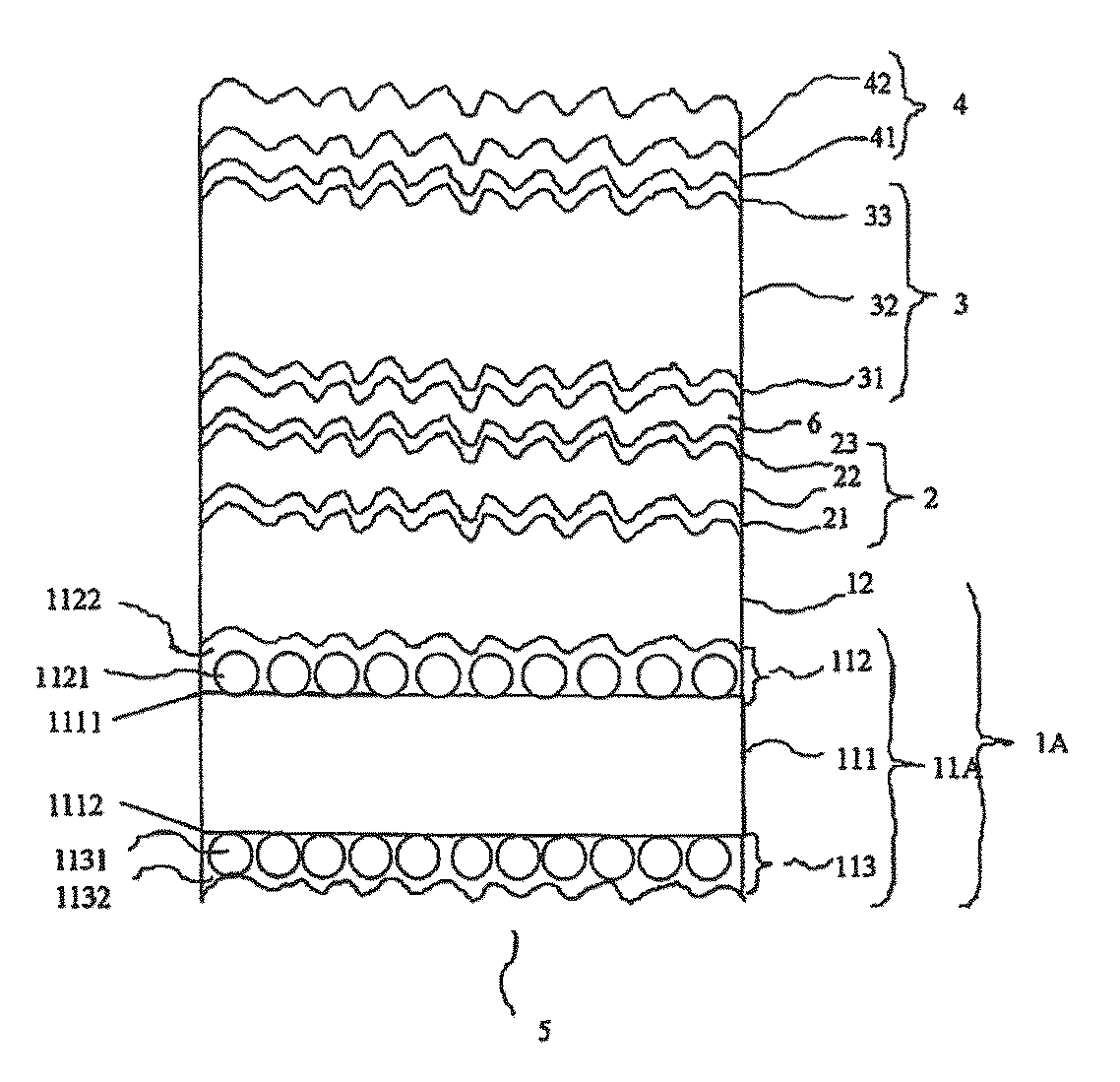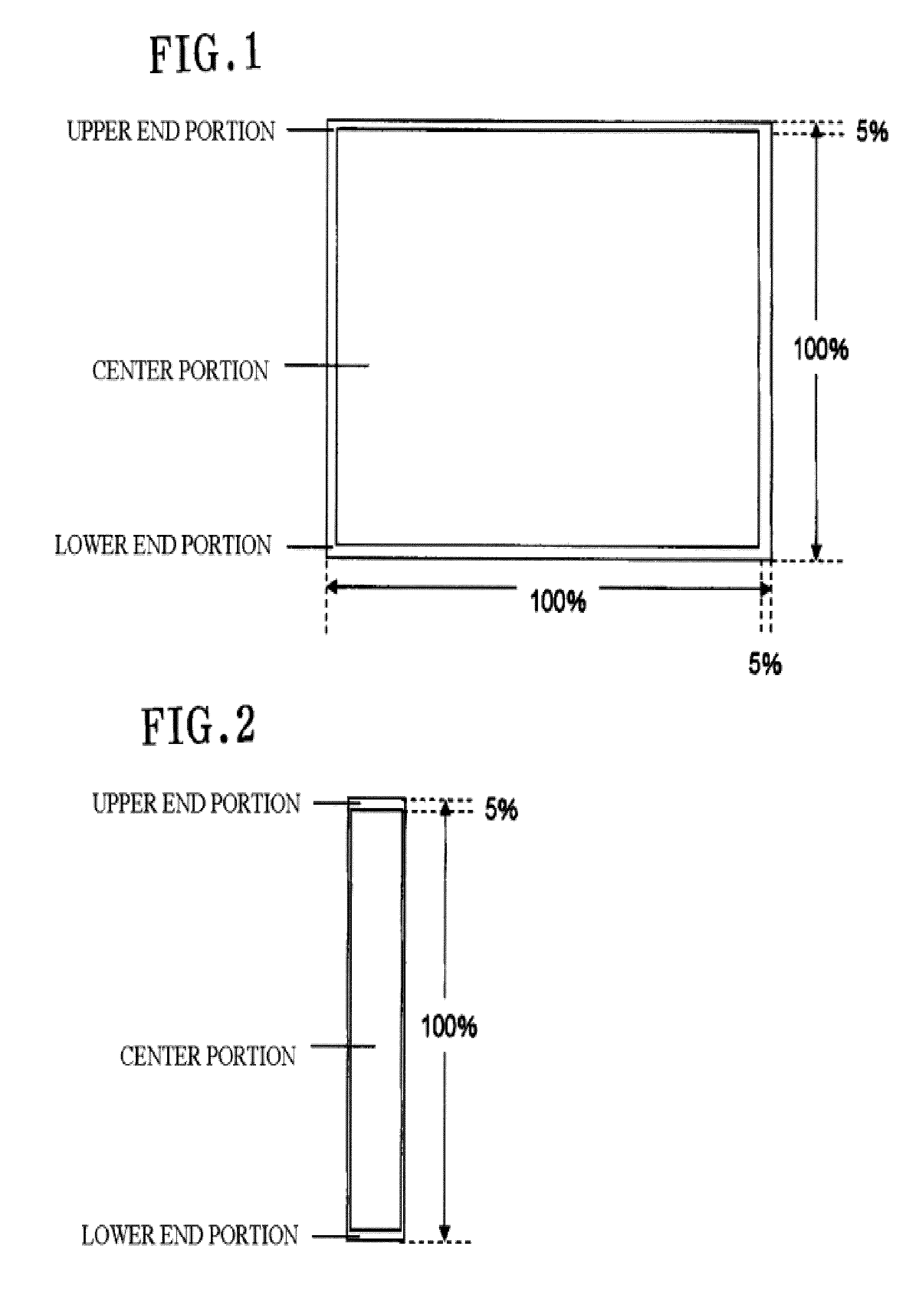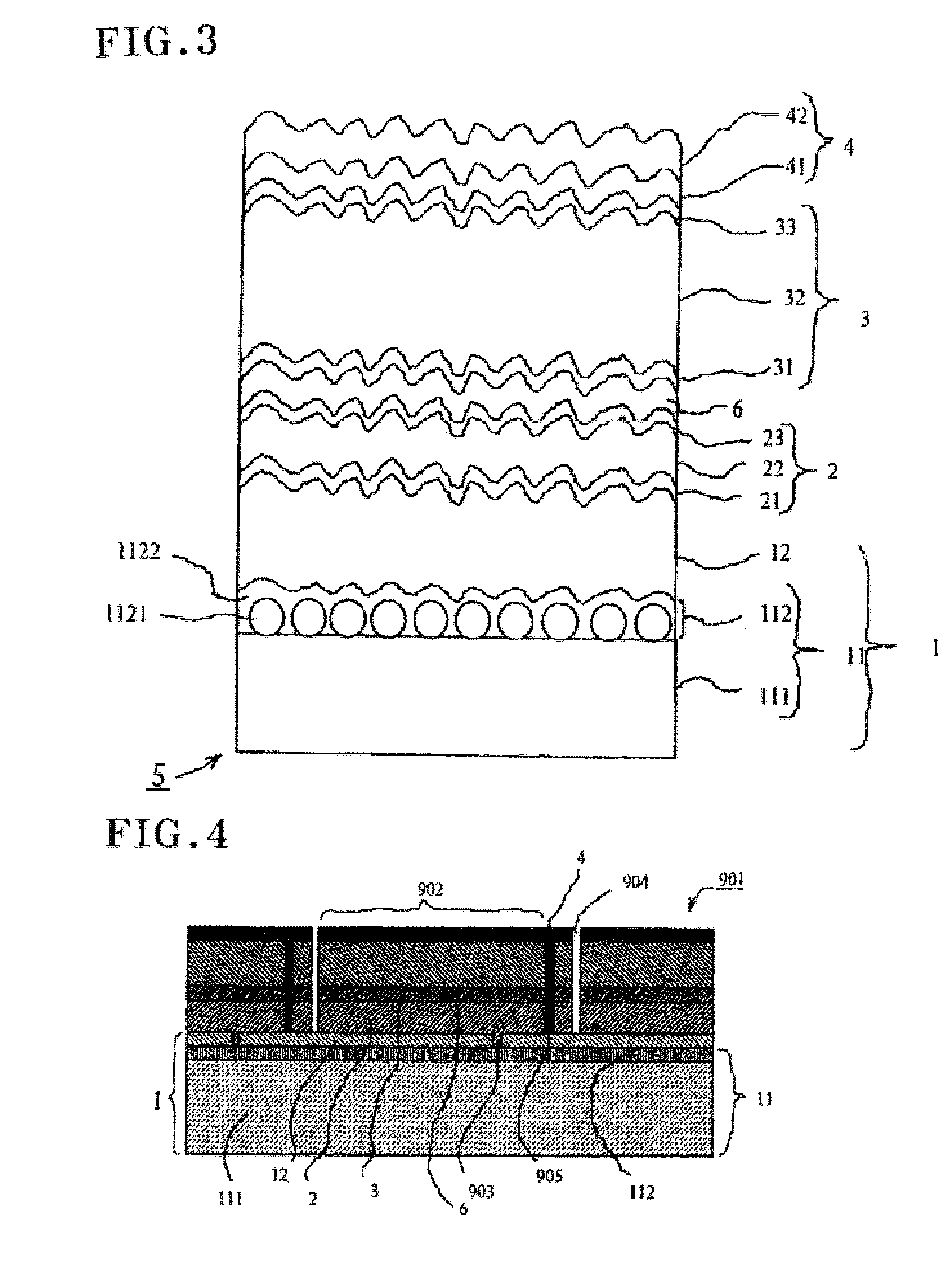Substrate for thin-film photoelectric conversion device, thin film photoelectric conversion device including the same, and method for producing substrate for thin-film photoelectric conversion device
a technology substrate, which is applied in the direction of final product manufacturing, pv power plants, coatings, etc., can solve the problems of difficult to remarkably change the shape of surface unevenness, affecting the formation of photoelectric conversion device, and reducing the conversion efficiency of thin-film photoelectric conversion device. , to achieve the effect of improving the ff and eff of the integrated-type thin-film photoelectric conversion device, improving the adhesion of the electrode layer, and improving the photoelectric conversion efficiency
- Summary
- Abstract
- Description
- Claims
- Application Information
AI Technical Summary
Benefits of technology
Problems solved by technology
Method used
Image
Examples
experimental example 1
[0118]A substrate 1 for a thin-film photoelectric conversion device, as shown in FIG. 3, was manufactured as Experimental Example 1 of the present invention. First, a transparent underlying layer 112 containing SiO2 fine particles 1121 and a binder 1122 was formed on a glass plate 111 having a thickness of 4 mm and an area of 910 mm×455 mm so as to obtain a transparent insulating base member 11. A coating solution to be used upon forming the transparent underlying layer 112 was prepared by processes in which tetraethoxy silane was added to a mixed solution of a dispersion solution of spherical silica having an average particle size of 100 nm, water and ethylcellosolve, and thereafter hydrochloric acid was added so that tetraethoxy silane was hydrolyzed, and diacetone alcohol and propylene glycol were further added as diluting solutions. The mass concentration of spherical silica relative to the coating solution as a whole was 6%. After the coating solution had been applied onto the ...
experimental example 2
[0123]In Experimental Example 2 of the present invention, a substrate 1 for a thin-film photoelectric conversion device similar to that of Experimental Example 1 was manufactured. That is, the substrate of Experimental Example 2 was different from that of Experimental Example 1 only in that the mass concentration of spherical silica relative to the coating solution as a whole was changed from 6% to 2%.
[0124]FIG. 7, which is similar to FIG. 5, shows an AFM image of the upper surface of a transparent insulating base member 11 obtained in Experimental Example 2. In comparison with that of FIG. 5 of Experimental Example 1, in FIG. 7 of Experimental Example 2, gaps among the silica fine particles were clearly widened, and in this case, the coverage factor of particles was 49.3%.
[0125]As a reference, FIG. 8 shows an SEM image of the upper surface of the transparent insulating base member 11 obtained in Experimental Example 2. In the SEM image of FIG. 8 as well, the same particle distribut...
reference example 1
[0127]In Reference Example 1, a substrate 1 for a thin-film photoelectric conversion device similar to that of Experimental Example 1 was manufactured. That is, the substrate of Reference Example 1 was different from that of Experimental Example 1 in that the average particle size of spherical silica was changed from 100 nm to 50 nm, and in that the mass concentration of spherical silica relative to the coating solution as a whole was changed from 6% to 4%.
[0128]The surface of the transparent insulating base member 11 obtained in Reference Example 1 was measured by AFM to find that the coverage factor of the particles was 98.9%.
[0129]On the transparent insulating base member 11 obtained in Reference Example 1, a transparent electrode layer 12 made of ZnO was deposited in the same method as that of Experimental Example 1. As a result, in the ZnO film transparent electrode layer 12 obtained in Reference Example 1, the thickness, obtained from interference of reflection spectra, was 1....
PUM
 Login to View More
Login to View More Abstract
Description
Claims
Application Information
 Login to View More
Login to View More - R&D
- Intellectual Property
- Life Sciences
- Materials
- Tech Scout
- Unparalleled Data Quality
- Higher Quality Content
- 60% Fewer Hallucinations
Browse by: Latest US Patents, China's latest patents, Technical Efficacy Thesaurus, Application Domain, Technology Topic, Popular Technical Reports.
© 2025 PatSnap. All rights reserved.Legal|Privacy policy|Modern Slavery Act Transparency Statement|Sitemap|About US| Contact US: help@patsnap.com



